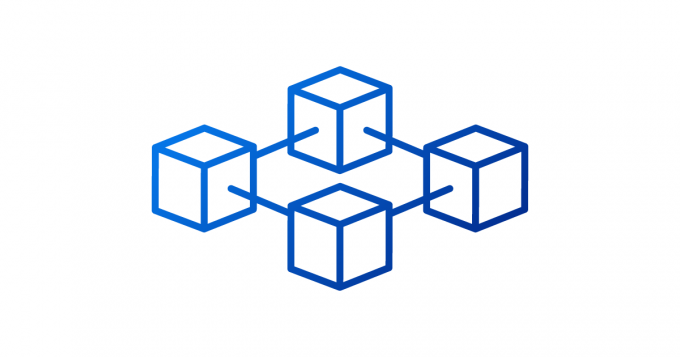Despite rapid price fluctuations and bubble cries, it’s clear that Bitcoin and the Blockchain technology that powers them are once again dominating financial and tech news cycles. Many pundits have been quick to write off the currency as a fad and a bubble fueled by pure speculation and greed––and while the fears aren’t unfounded, the coverage tends to generally gloss over what makes Bitcoin and the cryptocurrency space so exciting in the first place. Bitcoin isn’t exciting because of the potential for financial gain, it’s exciting because of the underlying Blockchain technology which makes Bitcoin possible in the first place.
In an effort to clear up confusion over Blockchain, Bitcoin and other more-confusing-than-they-need-to-be terms like Ethereum, ICOs, mining, hashrates, sharding and cryptography—this will be the first in a series of posts covering the Blockchain, key players, trends and how the technology can be applied to a variety of industries, including digital media and marketing. Article one begins with the foundation of Blockchain.
What is the Blockchain?
In very simple terms, the Blockchain is simply a distributed database of transaction data. Information is grouped and stored within blocks. These blocks can only hold a limited amount of data, so when one block fills up and more data needs to be stored, another block is created and associated with the block that preceded it to form a chain of data. In order for data to be saved and committed to the master chain, the contents of that block has to be verified by multiple independent entities, a process known as “reaching consensus” (there are several ways to reach consensus—Bitcoin uses the Proof of Work model, while Ethereum uses the Proof of Stake model). This verification process involves solving complex mathematical problems, which require computers with large amounts of processing power. Operators of those computers compete to solve these problems (transaction processing) and are rewarded for their work, typically via some form of digital asset. These computer operators are referred to as miners, and Bitcoin is an example of a digital asset reward for helping to process the transactions that are forming the chain.
This transactional process forms the very essence of the Blockchain ecosystem. In essence, the Blockchain is facilitating the creation of a decentralized super-computer by combining the processing power of individual miners in order to keep the Blockchain process running. These miners are incentivised to participate in the network by the digital assets they receive as rewards. Without this economic model, Blockchain as we know it would not work.
Because Blockchain is a distributed system—meaning there is no central point of control, and because all data is cryptographically encrypted (a much more secure form of the traditional username / password combination), and because the functioning of the Blockchain is dependent on showing proof-of-work and regular verification of all preceding transactions, Blockchain applications have the benefit of being extra secure and extra stable.
Hypothetical Blockchain Use Cases
Take, for example, the current problems with cloud hosting and storage. When Amazon’s AWS service experiences an outage, and takes half of the Internet down with it, it’s because Amazon is the central point of control. When the central point of control experiences a catastrophic failure, everything goes dark. Now, let’s say that AWS transitions to a Blockchain system, and users of the Amazon AWS Blockchain offer up unused hard drive space in exchange for Amazon coins each month (see Storj or Filecoin). In this environment, instead of Amazon selling space on their server farm, they are selling space on a distributed, decentralized network of computers. Each computer in the network only stores a small piece of the overall data load, and each of those small pieces is replicated across many different machines. This way, if one machine goes offline, Amazon simply re-routes traffic through the machines that are still online and have the necessary piece of data. No more wide Internet outages.
This same line of thinking can be applied to other industries where security and reliability are important to daily business functions. For example, if Equifax stored their data on a Blockchain instead of in a traditional self-hosted or cloud database, there would not have been a central point for hackers to attack. The data would have been too spread out and hard to hack to exploit.
Current Blockchain Applications
Ethereum has built on the success of Bitcoin to introduce the idea of Smart Contracts and the Proof-of-Stake methodology. In essence, Ethereum has created an operating system layer on top of Blockchain technology which enables the development of applications (called Dapps or decentralized applications) which execute certain tasks. Ethereum uses Blockchain economics to create a distributed supercomputer which helps to run these applications. Miners in the Ethereum chain are rewarded with Ethereum coins.
Ripple takes the Blockchain and applies it to the banking and finance sector for facilitating faster and cheaper transactions, among other use cases.
Litecoin is a digital currency like Bitcoin but cheaper and faster.
Monero is Bitcoin, but anonymous.
Power Ledger is a distributed marketplace for buying and selling energy. Earn Power Tokens for selling your excess energy.
Storj lets you earn Storj tokens for sharing your unused hard drive space.
Civic uses the Blockchain to provide secure identity management and verification.
As we’ve covered here, Blockchain is so much more than Bitcoin. While Bitcoin price speculation receives all the headlines, it’s simply one application of many that Blockhain enables. In future posts, we will go more in depth in the Blockchain space, covering Bitcoin, Ethereum, and more.
